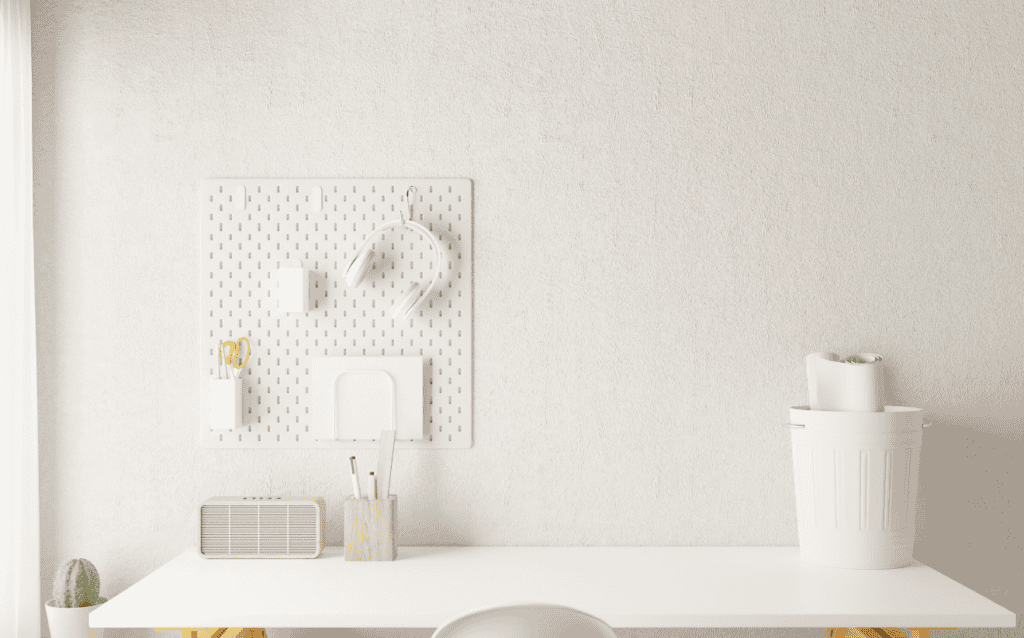Creating a comfortable workspace isn’t just about aesthetics, it’s about optimizing your productivity and agility. Whether you spend hours at a desk or on your feet, the ergonomics of your environment play a crucial role in your overall health and efficiency.
Table of Contents
Here are some practical solutions that can enhance your workspace comfort, allowing you to work smarter and feel better throughout the day.

Optimizing Desk Setup
Your desk setup is the foundation of your workspace’s comfort and efficiency. It should seamlessly complement your ergonomic chair, facilitating a smooth workflow and minimizing strain on your body by incorporating electric height adjustable desks to ensure optimal ergonomics.
Ideally, your desk should be at a height that allows your elbows to rest comfortably at a 90-degree angle when typing. This positioning helps prevent shoulder tension and promotes a natural alignment of your arms and wrists, reducing the risk of repetitive strain injuries.

- Invest in a height-adjustable desk or desk risers to accommodate different sitting and standing preferences throughout the day. This flexibility allows you to switch positions and relieve pressure on different parts of your body.
- Keep your desk surface clutter-free to create a more organized and functional workspace. Use cable management solutions to keep cords tidy and out of the way, reducing the risk of tripping hazards and improving the overall aesthetics of your desk.
- Consider adding ergonomic accessories such as a document holder or monitor stand to maintain proper neck alignment and reduce strain on your cervical spine.
- Experiment with different desk layouts to find the most comfortable and efficient arrangement for your workflow. Make adjustments as needed to optimize your productivity and reduce unnecessary strain on your body.
Choosing the Right Chair
Investing in a quality ergonomic chair is not just about comfort, it’s an investment in your long-term health and productivity. When selecting the right chair for your workspace, prioritize features that promote proper posture and reduce strain on your body.
Look for a chair with adjustable seat height, allowing you to customize it to your height and the height of your desk. Proper seat height ensures that your feet are flat on the floor or a footrest, promoting circulation and reducing pressure on your thighs and lower back.
- Look for a chair with adjustable features such as seat height, tilt, and armrests. This allows you to customize the chair to your body size and preferences, ensuring optimal support and comfort throughout the day.
- Consider the material of the chair upholstery. Breathable fabrics like mesh can help prevent overheating and moisture buildup, promoting comfort during extended periods of sitting.
- Pay attention to the chair’s lumbar support. Proper lumbar support maintains the natural curve of your spine, reducing the risk of lower back pain and promoting better posture.
- Test the chair before purchasing if possible. Sit in it for a few minutes to assess its comfort and adjustability, ensuring it meets your needs before making a final decision.
Prioritizing Keyboard and Mouse Placement
Positioning your keyboard and mouse to maintain straight and relaxed wrists while typing and clicking is crucial for preventing strain on your wrists and forearms.
You can achieve this by ensuring that your keyboard is directly in front of you and at a height that allows your elbows to rest comfortably at your sides and your wrists to remain in a neutral position.
Consider investing in a keyboard tray that can be adjusted to the optimal height and tilt to support your wrists and promote a more ergonomic typing posture.
Similarly, choosing an ergonomic keyboard and mouse with features such as split design, adjustable angles, and cushioned wrist rests can further reduce the risk of discomfort and repetitive strain injuries.
- Position your keyboard and mouse close together at the same height to minimize reaching and awkward wrist angles. This helps prevent repetitive strain injuries such as carpal tunnel syndrome and tendonitis.
- Use keyboard shortcuts and ergonomic mouse designs to reduce the amount of clicking and typing required during tasks. This can help alleviate hand and wrist fatigue over time.
- Consider investing in a split keyboard or an ergonomic mouse with customizable buttons to accommodate individual hand positions and preferences.
- Take regular breaks to rest your hands and wrists, especially during intensive typing or mouse use. Performing gentle stretches and exercises can help prevent stiffness and maintain flexibility in these areas.
Proper Lighting and Glare Reduction
Good lighting is essential for reducing eye strain and maintaining focus. Position your workspace near natural light sources whenever possible, but also invest in adjustable task lighting to supplement ambient light.
Minimize glare by using anti-glare screens or adjusting the position of your monitor to avoid reflections from windows or overhead lighting.
- Position your desk perpendicular to windows to minimize direct sunlight and glare on your computer screen. This reduces eye strain and prevents distractions during work hours.
- Adjust the brightness and color temperature of your monitor to match the ambient lighting in your workspace. This ensures comfortable viewing conditions and reduces the risk of eye fatigue and headaches.
- Install window treatments such as blinds or curtains to control natural light levels and minimize glare on your screen. This allows you to maintain optimal visibility without compromising on comfort.
- Consider using blue light filtering software or glasses to reduce exposure to harmful blue light emitted by digital screens. This can help alleviate eye strain and improve sleep quality, especially for those who work long hours on computers.
Implementing Standing Options
Sitting for prolonged periods can contribute to a host of health issues, including musculoskeletal pain and reduced circulation. Incorporating standing options such as a height-adjustable desk or a desk converter allows you to alternate between sitting and standing throughout the day, promoting better blood flow and reducing the risk of fatigue.
- Gradually increase your standing time to build endurance and acclimate your body to the new posture. Start with short intervals and gradually extend them as you become more comfortable standing for longer periods.
- Use an anti-fatigue mat or footrest to provide cushioning and support while standing. This reduces pressure on your feet and lower limbs, allowing you to stand more comfortably for extended periods.
- Alternate between sitting and standing throughout the day to prevent muscle fatigue and maintain circulation. Listen to your body’s cues and switch positions as needed to stay comfortable and productive.
- Consider investing in a balance board or active seating option to add variety to your standing routine and engage different muscle groups. This can help improve balance, posture, and core strength over time.
Prioritizing Self-Care and Regular Movement
In addition to optimizing your physical workspace, prioritizing self-care and regular movement throughout the day is essential for maintaining comfort. Practice good ergonomics not only during work hours but also in your leisure activities to prevent cumulative strain on your body.
Incorporate activities like yoga, stretching, or strength training into your daily routine to improve flexibility, strength, and posture. Remember to take breaks to rest and recharge, allowing your body and mind to recover from prolonged periods of sitting or standing. By nurturing your physical and mental health, you can enhance your overall comfort and productivity in the workspace.
Incorporating Movement Breaks
Regardless of how ergonomic your setup may be, prolonged static postures can still lead to discomfort and stiffness. Incorporate regular movement breaks into your work routine to stretch your muscles and increase circulation. Simple activities like walking around the office or doing desk stretches can alleviate tension and boost your energy levels.
- Set reminders or use productivity apps to prompt you to take regular breaks throughout the day. Schedule short movement breaks every hour to stretch and rejuvenate your body and mind.
- Practice desk exercises such as shoulder rolls, neck stretches, and wrist rotations to release tension and improve circulation during breaks. These simple movements can help alleviate stiffness and prevent muscle imbalances.
- Use break times to hydrate and refuel with healthy snacks to maintain energy levels and focus throughout the day. Staying hydrated and nourished supports overall productivity.
- Take advantage of outdoor breaks whenever possible to get fresh air and natural light. Even a short walk around the block can help clear your mind and invigorate your senses, making you more alert and productive when you return to your workspace.
Creating a Comfortable Work Environment
Beyond ergonomic furniture and setup adjustments, creating a comfortable work environment involves addressing factors like temperature, humidity, and noise levels. Maintain a comfortable room temperature, typically between 68-72°F (20-22°C), to prevent discomfort and distractions.
Use a humidifier or dehumidifier as needed to maintain optimal humidity levels, which can impact respiratory health and overall comfort. Additionally, minimize distractions by investing in noise-canceling headphones or soundproofing solutions to create a quieter work environment conducive to focus and productivity.

Finding comfort in your workspace is a multifaceted endeavor that requires attention to ergonomic principles, environmental factors, and self-care practices. By investing in ergonomic furniture, optimizing your desk setup, and prioritizing movement breaks, you can reduce discomfort and prevent work-related injuries.
Creating a comfortable work environment and incorporating self-care habits into your daily routine can further enhance your overall health and productivity.
Remember that small adjustments and consistent effort can make a significant difference in how you feel and perform in your workspace. By prioritizing comfort and health you can create a workspace that supports your health and success in the long term.
Enjoy Comfort in Your Workspace – FAQs
1. How do I know if my chair is ergonomic?
An ergonomic chair should have adjustable features such as seat height, lumbar support, and armrests to accommodate different body types and promote proper posture. It should also feel comfortable and supportive, allowing you to sit for extended periods without discomfort or fatigue.
2. Can I use a standing desk all day?
While standing desks offer benefits such as improved circulation and reduced risk of sedentary-related health issues, it’s essential to alternate between sitting and standing throughout the day to prevent muscle fatigue and discomfort. Experts recommend gradually increasing standing time and listening to your body’s cues to find a balance that works for you.
3. How can I reduce glare on my computer screen?
To reduce glare on your computer screen, position your desk perpendicular to windows to minimize direct sunlight and reflections. You can also use anti-glare screens or adjust the angle of your monitor to minimize glare from overhead lighting or nearby windows.
4. What are some signs that my workspace may not be ergonomic?
Signs that your workspace may not be ergonomic include discomfort or pain in your neck, shoulders, back, wrists, or eyes after prolonged periods of work. Other indicators include poor posture, fatigue, and decreased productivity. If you experience any of these symptoms, it may be time to reassess your workspace setup and make adjustments as needed.



